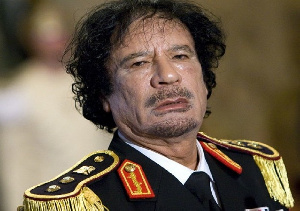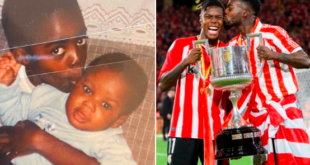Ten years ago, on October 20, 2011, he was ousted following an international military intervention led by France, the United States and Britain. The revolutionary and politician was rounded up by rebels at his hideout and subsequently killed. Anti-government protests had begun in Libya in February 2011, eight months before he was killed. The protests, which were inspired by the successful uprisings in Tunisia and Egypt, later turned into civil war as forces loyal to Gaddafi clashed with armed opposition groups.
On August 28, 2011, Gaddafi and two of his sons fled the Libyan capital, Tripoli, as it began to fall to rebels amid the conflict. But Khamis, one of the sons of the Libyan leader, was killed within a day by what was believed to be a NATO airstrike. Another son of Gaddafi, Saif al-Islam, managed to make it to the town of Bani Walid, but that town soon fell to rebels. Gaddafi fled to the Libyan coastal city of Sirte, his hometown.
A report by Human Rights Watch cited by The Washington Post, which looked at the Libyan leader’s movement over his last days based largely on the account of loyalist fighters, said Gaddafi arrived in Sirte with a personal driver, a small contingent of bodyguards and a state security official named Mansour Dhao. Gaddafi moved into the apartment blocks in the small downtown area, where he met with two officials of his administration to discuss the ongoing civil war. One of these two officials was Gaddafi’s son Mutassim. He would visit his father regularly while commanding Sirte’s defenses.
As rebels entered Sirte and fighting moved into the city center, Gaddafi decided to move to a more sparsely populated neighborhood at the western edge of town, according to the report.
“Bunkered down and wary of exposing themselves, Gaddafi and his bodyguards moved between abandoned homes, struggling to find a reliable source of food. The long-time dictator, who had siphoned off billions of dollars of oil wealth for his personal use, and his guards scrounged through the cupboards of empty houses for pasta and rice. Many of the water tanks had been damaged in fighting, making drinking water difficult to find,” The Washington Post wrote.
Gaddafi, for weeks, spent most of his time reading the Koran and praying. “There was no communication, no television, nothing,” Dhao, the security official, later told Human Rights Watch, adding that they had a satellite phone which they used to call people who had access to a television to know what was in the news.
“We had no duties, we were just between sleeping and being awake,” Dhao recounted. He said out of fear that their location would be discovered, they moved every four or five days. And they used only one or two cars when moving. It could be that those cars were all they had or probably they did not want to be noticed. As they continued to move, Gaddafi changed, “becoming more and more angry”, Dhao recalled.
“Mostly he was angry about the lack of electricity, communications and television, his inability to communicate to the outside world. We would go see him and sit with him for an hour or so to speak with him, and he would ask, ‘Why is there no electricity? Why is there no water?’”
On October 19, Mutassim told his father that he had a plan. He said they would flee Sirte, “breaking through the line of rebels laying siege to the city.” Gaddafi agreed and they started organizing the convoy. The Libyan leader’s bodyguards loaded some residents and the wounded into a convoy of about 50 vehicles, which were mostly four-by-four pickups. They also loaded the vehicles with weapons, including machine guns.
The plan was to set off at 3:30 or 4 a.m. but they kept long organizing the convoy and thus left by 8 a.m. By this time, many rebel militias had returned to their positions and the “flat desert plain was brightly lit”, according to The Washington Post. The National Transition Council forces had also increased their stranglehold on Sirte.
As Gaddafi and his team tried to escape Sirte, rebels soon came on to the convoy. Not too long after, a missile landed next to Gaddafi’s car. Dhao was injured from the explosion. As the convoy continued the journey, they ran into rebel militias from Misurata. The convoy started firing at the rebels. It was at this point that NATO fighter jets dropped two “PAVEWAY” laser-guided bombs, each 500 pounds, destroying around a dozen cars as the munitions-loaded trucks caught fire. The strike dispersed the convoy into several groups.
Gaddafi and a personal bodyguard contingent as well as his son Mutassim and his defense minister jumped from their vehicles and escaped on foot into an abandoned home. Rebels followed them.
“We found Moammar [Mummar] there, wearing a helmet and a bullet-proof vest. He had a handgun in his pocket and was carrying an automatic weapon,” the defense minister’s son recounted. Mutassim was soon captured and killed as he tried to get his father and the team to safety.
“Then the villa started being shelled so we ran out of there,” the defense minister’s son recalled. “There were a lot of cement construction blocks outside and we hid among those, with the families and the guards.”
Gaddafi and some 10 others ran to a drainage pipe nearby that ran under the road. They crawled through it, but rebels found them when they emerged, according to the Human Rights Watch report. One of Gaddafi’s bodyguards tried to throw grenades at the rebels, but one of the grenades bounced off a concrete wall and landed near Gaddafi. “The bodyguard leaned over to retrieve the grenade when it exploded, taking off his arm and wounding both Gaddafi and the defense minister,” The Washington Post reported.
Gaddafi started bleeding from a head wound and was soon rounded up by rebels who started beating him. He was even stabbed in the anus with a bayonet. “It was a violent scene, he was put on the front of a pickup truck that tried to drive him away, and he fell off,” a rebel commander told Human Rights Watch. “We understood that there needed to be a trial, but we couldn’t control everyone, some acted beyond our control.”
It remains unknown what happened next. Human Rights Watch said a phone video of the scene seemed to show “Gaddafi’s nearly naked and apparently lifeless body being loaded into an ambulance, suggesting that he may have been dead by the time he left his area of capture.” After two hours, the ambulance arrived in Misurata, and bloody images of Gaddafi’s corpse were soon shared across the world.
To date, it is not known who killed Gaddafi. It could be that he died from the mob beating or that his injuries that included the grenade explosion may have claimed his life. It could also be that he was killed before being placed into the ambulance or moments after, before arriving in Misurata.
“Some militia fighters from Benghazi claim to have shot Gaddafi dead during a dispute with Misurata fighters about where to take him, but their claims remain unconfirmed,” according to the Human Rights Watch report cited by The Washington Post.
 Home Of Ghana News Ghana News, Entertainment And More
Home Of Ghana News Ghana News, Entertainment And More





